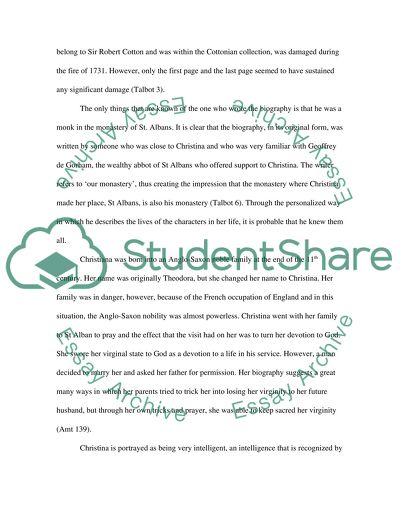Cite this document
(“Christina of Markyate Essay Example | Topics and Well Written Essays - 2000 words”, n.d.)
Retrieved from https://studentshare.org/history/1414231-the-life-of-christina-of-markyate-promotes-a
Retrieved from https://studentshare.org/history/1414231-the-life-of-christina-of-markyate-promotes-a
(Christina of Markyate Essay Example | Topics and Well Written Essays - 2000 Words)
https://studentshare.org/history/1414231-the-life-of-christina-of-markyate-promotes-a.
https://studentshare.org/history/1414231-the-life-of-christina-of-markyate-promotes-a.
“Christina of Markyate Essay Example | Topics and Well Written Essays - 2000 Words”, n.d. https://studentshare.org/history/1414231-the-life-of-christina-of-markyate-promotes-a.


